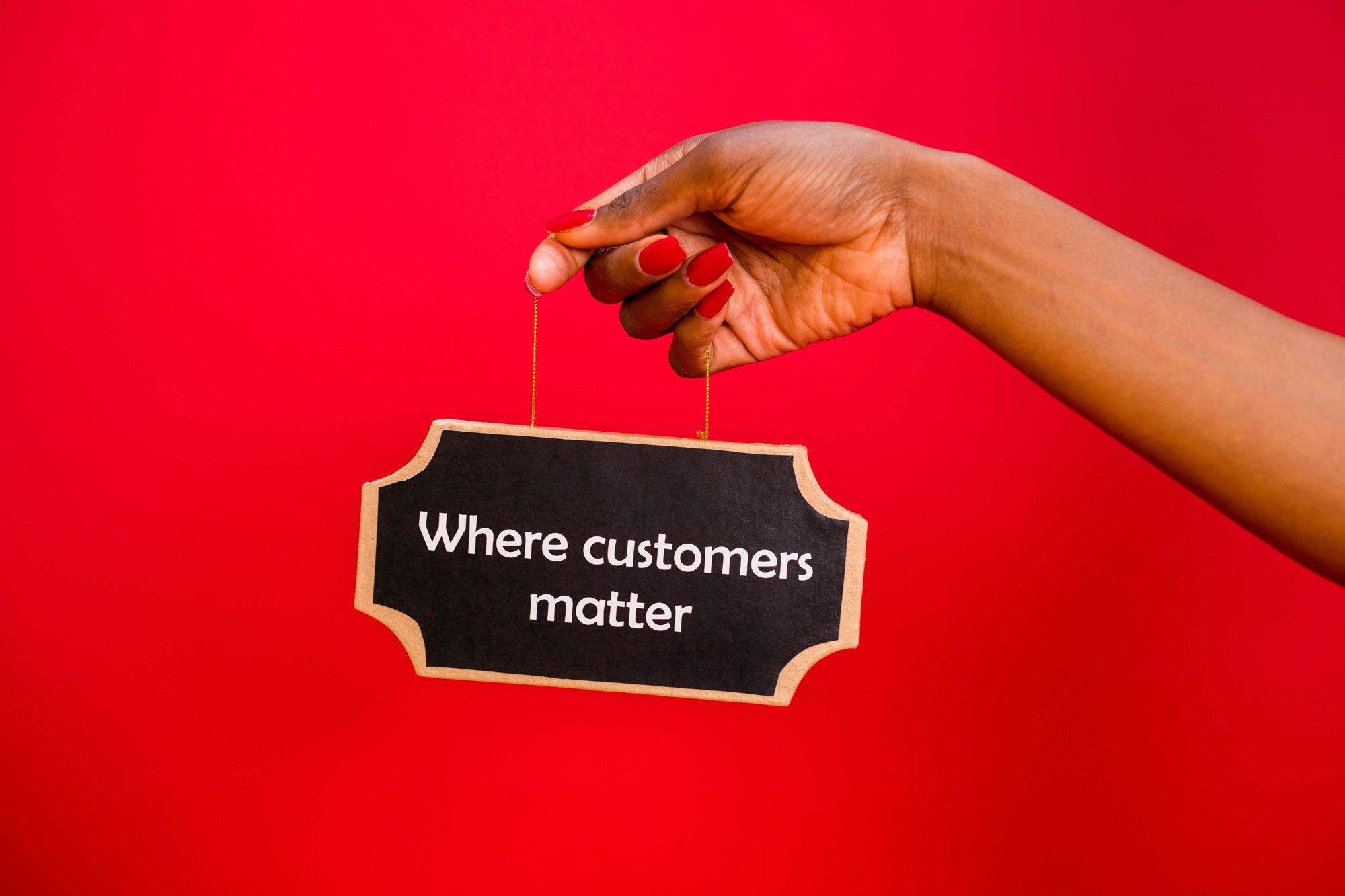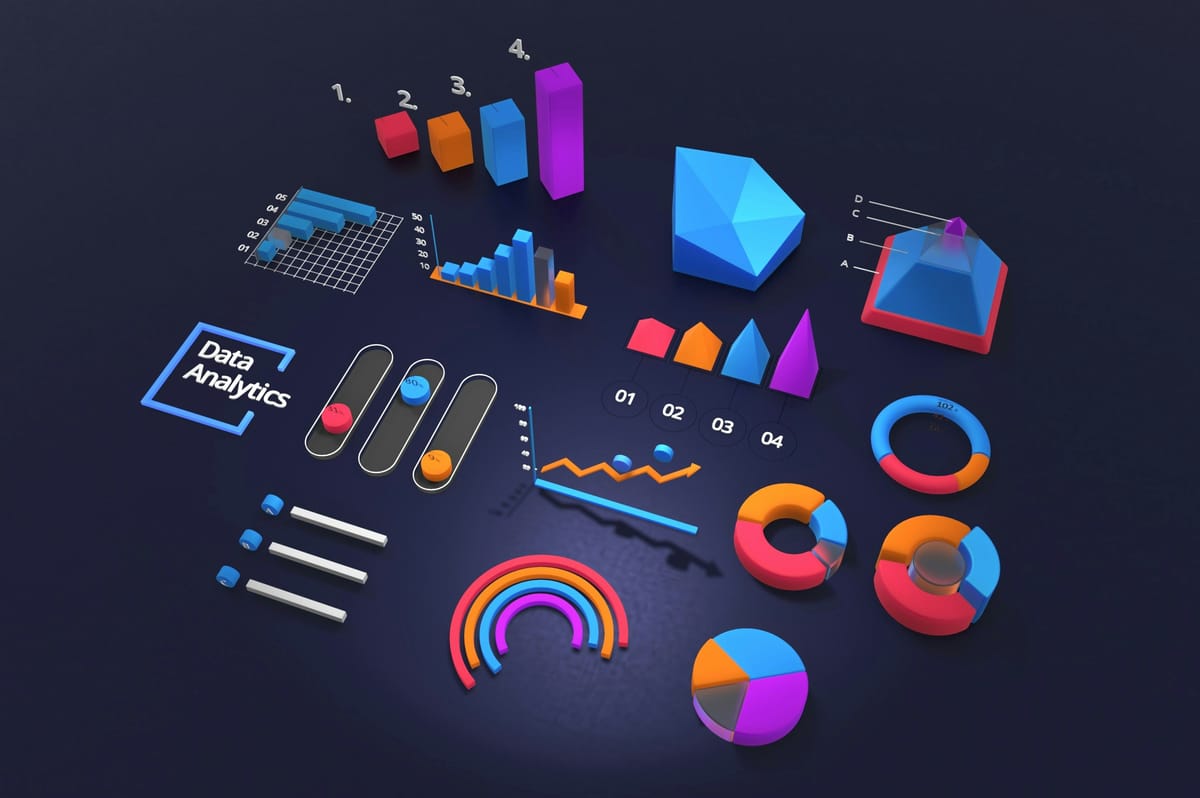Retention marketing is a primary player in the revenue marketing game. It's the key to keeping your current customers engaged, winning back previous customers, and driving increased purchases from your existing customer base.
Simply reintroducing them to your marketing funnel isn't enough. To prevent boredom and frustration, and to make them feel valued, a tailored approach is essential.
In fact, research shows that 68% of customers would switch to a competitor if they perceive a lack of care from a company.
To implement effective B2B retention marketing, you must incorporate specialized segmentation within your marketing funnel, ensuring that existing customers receive targeted content that's relevant to their needs.
Taking it a step further, you can establish a dedicated retention funnel or cycle, exclusively designed to address the unique requirements of your customers and guide them toward future sales.
In this guide, we’ll give you a comprehensive overview of what you need for a successful retention marketing campaign, including:
- What is retention marketing?
- Why retention marketing is so important
- The benefits of retention marketing
- Key metrics and KPIs for retention marketing
- Strategies for retaining customers
- Retention marketing data analytics
- Tactics for revenue growth
- Tools and technologies you can use
Don't have the time to read the article right now? No worries! Take it away with you as an eBook. 👇
What is retention marketing?
Retention marketing is a strategic approach that focuses on nurturing and strengthening relationships with existing customers, ensuring that your brand remains top-of-mind and continues to deliver value long after the initial purchase.
Imagine you've invested countless resources into attracting and converting a new customer. Here’s the real challenge: How do you keep them engaged, satisfied, and loyal?
That's where retention marketing comes into play. It's a proactive effort to understand your customers' needs, preferences, and behaviors, and then use that knowledge to provide personalized experiences that foster lasting connections.
Effective retention marketing involves a combination of tactics like targeted email campaigns, loyalty programs, exclusive offers, and exceptional customer service.
You need to make your customers feel valued and appreciated, not just during the purchase process but throughout their entire journey with your brand and beyond – remember, you want loyal customer advocates, not just empty one-off purchases.

Consider a scenario where you've made a significant purchase from a retailer. Wouldn't you appreciate receiving follow-up communications that offer helpful tips, personalized recommendations, or exclusive discounts tailored to your interests?
That's retention marketing in action – keeping you engaged, satisfied, and more likely to become a repeat customer.
Retention marketing is a cost-effective strategy. Studies have shown that acquiring a new customer can cost five times more than retaining an existing one.
When you focus on customer retention, you not only maximize the lifetime value of each customer but also benefit from positive word-of-mouth (WoM) and referrals, which can drive even more business.

Why is retention marketing important?
If you’re still on the fence about the advantages of retention marketing after those stats we threw at you in the opening, let’s take a look at some more to convince you.
- The probability of making a sale to a new prospect is between 5 and 20%. When it comes to existing customers, this jumps up to between 60 and 70%.
- Existing customers spend 31% more than new ones, and they’re 50% more likely to try any new products you put out.
- The longer you retain a customer, the more likely they are to become advocates for you, where they’ll do the job of acquisition for you. They might leave a review about you, or post about you on social media.
This kind of user-generated content has been cited as one of the most credible sources of content for B2B buyers. You might even be able to produce case studies involving them, which is considered the most valuable type of content for B2B buyers.

What are the key benefits of retention marketing?
1) Increased customer loyalty
Think about your favorite restaurant or retailer. The reason you keep going back isn't just the quality of their offerings but also the personal touch they provide.
Retention marketing allows you to develop that same level of connection with your customers. Through personalized communications, exclusive offers, and tailored experiences, you create a sense of belonging that fosters unwavering loyalty.

2) Higher customer lifetime value
Imagine you've invested in acquiring a new customer. Now, instead of treating them as a one-time transaction, retention marketing encourages you to nurture that relationship over time.
When you consistently deliver value and meet the needs of your customers, you unlock the potential for high-value, long-term relationships.
3) Reduced customer acquisition costs
You pour so many resources into attracting new customers – advertising, promotions, and more. It's a significant investment. However, with retention marketing, you can shift that focus toward retaining the customers you've already won over.
Having a loyal fan base that keeps coming back reduces the need for constant customer acquisition efforts and their associated costs.
4) Improved customer insights
Every interaction with an existing customer is an opportunity to learn. Through retention marketing initiatives like surveys, feedback loops, and data analysis, you gain invaluable insights into their preferences, pain points, and aspirations.
You gain a direct line of insights into their thoughts and behaviors, allowing you to refine and enhance your offerings continuously.
5) Positive word-of-mouth
Retention marketing nurtures organic advocacy by providing remarkable experiences worth raving about. Think about it – if you not only meet but exceed the expectations of your customers, they won’t hesitate to share their positive experiences.
If they love your brand or product enough, they’ll passionately recommend you to their friends and networks, driving new business your way.
6) Competitive advantage
Customer retention can be a game-changer for gaining a competitive edge. It’s important to foster strong relationships with your existing customers if you want to create a loyal following that's less susceptible to competitors' attempts to lure them away.

7) Opportunities for upselling and cross-selling
If you can genuinely understand your customers and their changing needs, you’ll be able to identify opportunities to introduce complementary products or services that enhance their experience.
Retention marketing opens the door for these upselling and cross-selling opportunities by maintaining an active dialogue and demonstrating your commitment to their success.

Retention marketing is about building long-lasting, mutually beneficial relationships with your customers. Focus on your customers’ needs, deliver exceptional experiences, and you’ll be able to create a virtuous cycle of loyalty, advocacy, and sustained revenue growth.
Key metrics and KPIs for retention marketing
Retention marketing is like nurturing a flourishing garden of loyal customers, ensuring they stay connected, engaged, and satisfied with your brand.
To excel in this art, you need to wield some key metrics and KPIs to help you understand and optimize your strategies for long-term success.
Understanding customer lifetime value (CLV)
One of the most essential metrics in retention marketing is customer lifetime value (CLV). CLV is like having a crystal ball that reveals the long-term worth of each customer.
It takes into account their purchase history, average order value, frequency of purchases, and the duration of their relationship with your brand. Understanding CLV lets you can allocate resources wisely, tailor personalized offers, and foster loyalty among high-value customers.

Retention rate and churn rate
Another vital pair of metrics to keep a close eye on are retention rate and churn rate.
Your retention rate is like a barometer of customer loyalty, measuring the percentage of customers who stick around over a given period. A high retention rate indicates that customers are satisfied and remain loyal to your brand.
On the other hand, the churn rate represents the percentage of customers who discontinue their relationship with your brand. Customer churn is common, but you can reduce it by identifying the reasons for churn creating strategies to retain customers and build a stronger bond.
Average revenue per user (ARPU)
To truly understand the financial impact of your retention efforts, average revenue per user (ARPU) is a metric you can't ignore.
ARPU calculates the average revenue generated by each customer within a specific period. Tracking ARPU enables you to identify trends, segment customers based on their spending habits, and tailor your marketing strategies accordingly.
It's a powerful metric that can guide you in maximizing revenue from existing customers.

Net promoter score and customer satisfaction metrics
But retention marketing isn't just about the numbers; it's also about fostering a strong emotional connection with your customers. This is where metrics like the Net Promoter Score (NPS) and customer satisfaction metrics come into play.
NPS measures customer satisfaction by asking customers how likely they are to recommend your brand to others. It's a simple yet powerful indicator of customer advocacy.
Customer satisfaction metrics, on the other hand, go deeper into customer sentiment, gathering feedback on various aspects of their experience.
When you listen to your customers and understand their satisfaction levels, you can identify pain points and opportunities for improvement.
So, armed with these key metrics and KPIs, you have the foundation to build an irresistible retention marketing strategy. When you nurture your customer relationships, maximize CLV, reduce churn, increase ARPU, and prioritize customer satisfaction, you can create an enchanting experience that keeps customers coming back for more, establishing your brand as a trusted companion in their journey.
Strategies for retention marketing
There are many different strategies you can use to improve your retention marketing. Many of these strategies typically look like:
- Building customer loyalty and advocacy
- Personalization and segmentation
- Customer journey mapping
- Email marketing and newsletters
- Loyalty programs and rewards
- Customer feedback and engagement
But there are things you can do, either proactively or reactively, that can also help to improve your customer retention rates, which is what we'll be focusing on here.

Proactive: Keeping your customers happy
If your customers are happy, then they’re unlikely to go elsewhere, simple enough. Now the best way to do this from a company perspective would be to provide top-notch products/services at the right price exactly when they need them.
Sadly, as a marketer, there’s not much you can do from that perspective, since they'd typically be the responsibility of your product, sales, and operations departments, respectively.
So what can marketers do to increase customer happiness?
Help your customers make the most of your products through content
Content is often seen as a means of acquiring new leads and improving your SEO, but it can play a valuable role in retaining your customers.
You should be producing content that tells your customers how to get the most out of the products they’ve purchased from you. Work closely with your customer success and support teams to get insights into the types of content you should be putting together.
These best practice guides can be used to help them integrate your products into their systems (whether physical or digital), highlight features that can help them, and tackle common issues.
This'll reduce the need for your customers to have to contact your customer support teams, except only in the direst circumstances.

Not only will your customers be able to make better use of your products with your help, but your customer support team will also be able to devote more time and resources to resolving major issues since they won’t be preoccupied with large numbers of minor issues.
And with 68% of B2B customers ceasing business with a company after just one instance of poor customer service, you want to give your customer support team as much help as you can!

Frequently engage with your customers
68% of customers will go elsewhere if they feel the company they’re buying from doesn’t care about their business. And the easiest way for them to feel uncared for is by not speaking to them.
Now we’re not saying you should be constantly calling them up to ask “how you doin’?” But staying in contact through your marketing channels will make them feel valued.
The two principal methods for this would be via email and social media.
Email marketing
You can use email to send highly personalized marketing messages, highlighting products and services that would be useful to them on top of what they’re already purchasing.
But you don’t just have to try and sell them things, email can be useful for distributing customer feedback surveys.
Not only can this show how you can improve your products, and act as research on potential new offerings, it shows your customers that you value their thoughts and opinions.
Social media
Social media can be used in a similar way, but it becomes more of a two-way street. Engaging with your customer’s social media posts and celebrating their wins can go a long way to showing them how valuable they are to you.
Events can be a valuable resource in maintaining relationships with your customers. Whether physical or digital, sending personalized invitations when the event is relevant to them shows you have an understanding of their needs.
These could be webinars/seminars, product demonstrations and launches, and more. But they don’t just have to be events related to your products. Inviting key customers to more “fun” events can be valuable in maintaining good relations.
For example, if you’re having an event to celebrate reaching a key milestone, or anniversary, inviting the customers who've helped you reach that point will show them how valuable they are.
If they enjoy themselves enough, it gives them an extra incentive to stick with you. After all, they’ll miss out on the fun if they aren’t your customers anymore!
So there are your proactive strategies, now let’s take a look at the reactive frameworks.
Reactive: make your customers rethink leaving you
Inevitably, at some point, you’re going to have customers that are seriously thinking about leaving you. It happens.
But you don’t have to let them go without a fight!
Having a system in place to re-engage with your customers that are thinking about straying, or even to coax them back can be an effective way of reducing churn and retaining customers.
Find out why they’re leaving
Step one should be to find out why they’re leaving. Speak to whoever handles their account in both your sales and customer support departments.
Analyze sales data on their prior purchases, or even usage data if yours is a digital product. Best of all, ask the straying customer themselves! This could be a customer feedback form or even an actual conversation.
After all, you can’t know what to fix if you don’t know what’s wrong!

Show that you’re taking their feedback on board
It’s likely that there are certain reasons for leaving that you can’t tackle when it comes to marketing. Things like price points, product quality, and operations are beyond your control.
However, you can find ways to show that you’re taking on their feedback. You can produce content that shows a timeline for when certain issues could be resolved.
This'll give customers an incentive to stick around just a little bit longer, giving you more time to resolve the issues they were facing.
You can coordinate with sales to develop special offers to act as incentives to stay with you. This'll show that you’re flexible and that you value their business.
If their reason for leaving is that they believe one of your rivals has better offers, you can produce content that highlights your advantages over them. This doesn’t have to be something so obvious as a direct comparison, just highlight things that you do and provide that your competitors don’t.
Let them go with a kind word
If despite your best efforts the customer still wants to end doing business with you, you should aim to make it as amicable as possible.
Think of it like when one of your employees moves onto a new role. If you ever want to employ them again, you want to treat them well and make them feel like they’d want to come back. It’s the same with customers.
Thank them sincerely for their business, and highlight the successes you’ve both enjoyed while working together.
Leave the door open for their return because you’ll want to…
Check up on your exes
Unlike the dating world, it can be valuable to stay in touch with your exes when it comes to regaining customers.
Stay connected with them on social media, and it’s likely they’ll stay in touch with you. If you engage with their posts, they might stay engaged with yours and see how successful you are.
If you have their permission, you can send them emails highlighting new products, services, or special offers. However, make sure you aren’t doing these kinds of activities to the detriment of your attempts to retain the customers you actually have or acquire new customers.
Data analytics in retention marketing
Data analytics is the superpower that empowers you to understand, anticipate, and enchant your customers.
Collecting and analyzing customer data, utilizing predictive analytics, segmenting your audience, and constantly testing and optimizing your strategies, allows you to create a captivating journey that keeps customers loyal and engaged.
So, let the data be your guide for retention marketing success.
Collecting and analyzing customer data
Data analytics is the foundation upon which successful retention marketing is built. It all begins with collecting and analyzing customer data.
There's so much data at your disposal, and when you harness this wealth of information, you can unlock valuable insights that illuminate the path to customer retention.
From purchase history and browsing behavior to demographic details and social media interactions, every piece of data holds a clue to understanding your customers better.
Utilizing predictive analytics
But collecting data is just the first step. The true magic lies in utilizing predictive analytics.
Leverage advanced algorithms and statistical models to uncover patterns and trends that allow you to predict customer behavior. With this foresight, you can proactively tailor your retention strategies, reaching out to customers at the right time, with the right offers, and through the right channels.
Segmentation based on behavior and preferences
Segmentation is another powerful technique. Divide your customer base into distinct groups based on behavior, preferences, and characteristics to create targeted campaigns that resonate with each segment.
Whether it's catering to the needs of your most active customers, re-engaging with dormant ones, or enticing new customers with personalized offers, segmentation allows you to deliver tailored experiences that captivate and retain.

A/B testing and optimization
But how do you know if your retention marketing efforts are hitting the mark? This is where A/B testing and optimization step in. A/B tests are controlled experiments that enable you to compare different versions of your marketing strategies and measure their impact on customer retention.
Whether it's testing different email subject lines, website layouts, CTA buttons, or promotional offers, A/B testing provides valuable insights into what really resonates with your audience.
These insights will help you to optimize your campaigns and fine-tune every element to maximize their effectiveness.
Retention marketing tactics for revenue growth
The main aim of the game when it comes to retention marketing is to ensure that all the interactions a customer has with your brand post-purchase continue to be positive.
Satisfaction with the products and services they’ve paid for isn’t enough, you want them to feel happy every time they interact with you, whether it’s immediately after the purchase has been made, support in utilizing your products/services or looking to make a new purchase.
That’s where retention marketing tactics come in. We’re going to take you through some of the most popular ones, and the effects they can have on retaining customers.

Personalized marketing
Happy customers are more likely to continue to purchase from you, and one way to do that is to make them feel like they’re your no.1 priority. If you’re presenting them with content that seems tailored to their needs, then it'll make them feel like you’re devoting most of your resources to their needs.
If you have the scope for an account-based marketing (ABM) model, this is pretty much what you’re doing already. But even if you don’t have the scope for that, or ABM’s simply not right for your industry, there are ways to do this.

Properly segmenting your customer base is an extremely useful exercise, making it easy to target them with relevant content.
You can utilize artificial intelligence (AI), automation, and machine-learning systems to make sure things like emails are populated with content that’s relevant to the customer while addressing them on a seeming one-to-one basis.
This level of personalized content is tried, tested, and trusted by B2B marketers: 77% state it helps build better customer relationships.
Advocacy programs
What’s better than having customers? Having customers who make more customers for you!
While you can get to the point where your customers are singing your praises through the good old-fashioned combination of high-quality products and top-notch customer service, you can give your customers an extra incentive through advocacy programs.
These act as rewards when your customers refer others or promote your brand. The rewards tend to vary depending on your products and services, but often they take the shape of discounts or coupons.
You’ll want to make sure you find the right balance between making the rewards valuable enough to your customers to be worth their time, while not costing you more than what you’re gaining from their advocacy. But once you find that balance it can be extremely valuable!
Loyalty programs
If your customers feel like they’re getting something extra with their purchase, they’ll be more likely to purchase from you. It’s a pretty simple concept, but it can be extremely effective.
A relatively easy method of adding value is to offer discounts and coupons on their next purchase or reward them with regular bonuses if they keep using your services.
You don’t even have to reward them for every purchase. There's a reason why loyalty cards are popular with coffee chains: You get a free drink once you’ve had your card stamped enough times, or earned enough points from purchases.
Customers like to get something for free and they like to know that their custom is appreciated and rewarded.
A slightly more complicated way of doing things is to give greater rewards the longer a customer remains your customer. This'll give a greater incentive to be a long-term customer.
These are ways to incentivize your customers to purchase from you regularly, not just one-and-done. Again, you’ve got to make sure the rewards you’re giving away to your customers impact the gains, but the right balance can massively increase the number of long-term customers you have.
Exclusive bonuses
Keeping your customers happy often means making them feel like they’re your no.1 priority.
One method for this is to have an extra tier above just being a customer, so it feels like they’re in a more committed relationship. This can take the form of some kind of exclusive community-driven program, which your customers have to qualify for in some way.
Maybe it’s a subscription model, maybe they have to make a certain number or bulk of purchases, or they could be an extremely important account and you just invite them to make them feel special.
Being part of this exclusive community should come with bonuses that aren’t available elsewhere. Discounts, priority customer service, invitations to exclusive events, are a great place to start to ensure your customers feel like they’re getting something special just being a member of your community.
Tools and technologies for retention marketing
Having the right tools and technologies in your arsenal can make all the difference. These powerful tools enable you to streamline your efforts, automate key processes, and engage with your customers in a more meaningful way.
Let's explore some of these tools and technologies that can take your retention marketing to new heights.
Customer relationship management (CRM) systems
At the core of any successful retention strategy is a robust Customer Relationship Management (CRM) system. CRM systems provide a centralized hub for managing and nurturing customer relationships.
They store vital customer information, including contact details, purchase history, interactions, and preferences. With a CRM, you can track customer interactions, analyze their behavior, and gain a comprehensive view of their journey.
This allows you to personalize your marketing efforts, deliver targeted messages, and provide exceptional customer experiences.
Marketing automation platforms
Marketing automation platforms automate repetitive tasks, allowing you to scale your campaigns and engage with customers at scale.
From personalized email drips to automated social media posts, marketing automation platforms streamline your workflows and ensure consistent, timely communication.
With features like lead scoring, behavior tracking, and triggered campaigns, these platforms enable you to deliver the right message to the right customer at the right time.
Email marketing tools
Speaking of email, email marketing tools are indispensable for retention marketing. These tools provide a range of features to help you craft compelling email campaigns that drive customer engagement and loyalty.
From customizable templates and drag-and-drop editors to advanced segmentation and personalization options, email marketing tools empower you to create impactful messages that resonate with your audience.
Additionally, they offer analytics and reporting capabilities, allowing you to track open rates, click-through rates, and conversions, enabling you to refine your strategies for better results.
Customer feedback and survey platforms
To truly understand your customers and gather actionable insights, customer feedback, and survey platforms come into play. These tools enable you to capture feedback, conduct surveys, and measure customer satisfaction levels.
Actively seeking feedback demonstrates that you value your customer’s opinions and are committed to delivering exceptional experiences.
The insights gained from these platforms can guide you in identifying areas for improvement, resolving issues, and tailoring your retention strategies to better meet customer needs.
Final thoughts on retention marketing
Retention marketing is the key to unlocking long-term success. Sure, acquiring new customers is important, but nurturing those existing relationships? That's where the real magic happens.
To truly master effective retention marketing, you'll need to wield metrics like customer lifetime value, retention rate, and net promoter score. These insights will enable you to creating personalized, tailored experiences that foster strong, long- lasting relationships.
Implementing smart strategies – personalization, segmentation, loyalty programs, you name it – allows you to continuously deliver value and demonstrate how much you appreciate your customers' business. And let's not forget the pivotal role of data analytics, empowering you to predict behavior, optimize campaigns, and truly understand your audience.
With the right tools at your disposal – robust CRMs, automated marketing platforms, insightful survey tools – you can streamline efforts, engage at scale, and gather those game-changing customer insights.
Ultimately, retention marketing cultivates mutually beneficial relationships built on trust, value, and exceptional experiences.
Keep your customers feeling cherished and appreciated, and you'll unlock a virtuous cycle of loyalty, advocacy, and revenue growth that just keeps on giving.
Become an RMA Pro member
As a fully-fledged Revenue Marketing Alliance member, you unlock exclusive access to an array of revenue marketing resources, including:
🤩 Exclusive content. An entire library of action-led content written by experts from orgs like Showpad, SecurityHQ, and Instagram. Added to every other week.
🛠 Templates & frameworks. To save you time, streamline your processes, and work off industry-standard documents. Updated every month.
🎬 On-demand event coverage. Catch up on every single second of our virtual and in-person events. Any time. Anywhere. And learn from Gong, HubSpot, Adobe, and many more.
🔥 Amplified expertise. Take your knowledge to the next level with our members' discount on courses and events, and early access to reports, and updates from our community.
🤝 Lasting community connections. Network with fellow members with all levels of experience. Ask questions and begin to reach new heights in your career. Together.
Plus, you get extra discounts on in-person and online events...
Wanna find out more? Click the link below.



 Follow us on LinkedIn
Follow us on LinkedIn




